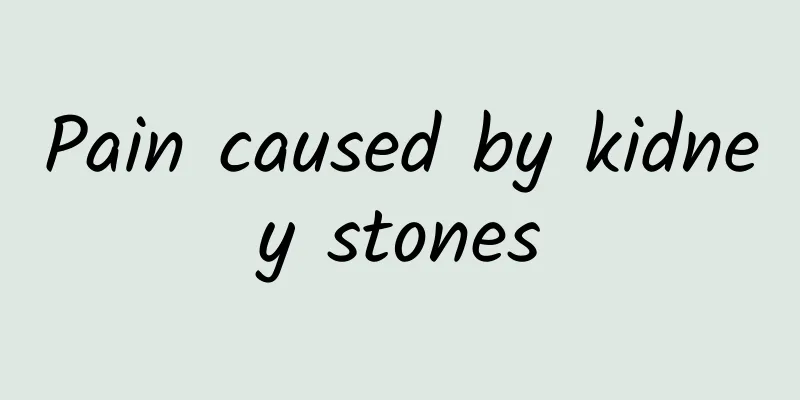Symptoms of venous sinus thrombosis

|
Venous sinus thrombosis is a relatively common cerebrovascular disease. Although its incidence rate is not particularly high, the harm is indeed very great, especially for children. It may cause relatively serious effects, often causing edema in children, causing damage to neurons, and easily causing punctate bleeding. Generally, it will not cause ventricular dilation and will not cause children to develop symptoms of hydrocephalus. Clinical symptoms To better understand the clinical symptoms and signs of CVST, two different pathophysiological mechanisms should first be distinguished. That is, cerebral venous thrombosis - focal symptoms caused by venous obstruction; cerebral venous sinus thrombosis - intracranial hypertension caused by venous sinus thrombosis. In most patients, these two pathophysiological processes often exist simultaneously. Occlusion of cerebral veins produces localized cerebral edema and venous infarction. Pathological examination may reveal enlarged, swollen veins, edema (including cytotoxic edema and vasogenic edema), ischemic neuronal damage and punctate hemorrhages. The latter can fuse into a large hematoma and be detected by CT. Transverse sigmoid sinus thrombosis can lead to increased venous pressure, thereby affecting the absorption of cerebrospinal fluid and causing intracranial hypertension. Because the disease affects the final pathway of cerebrospinal fluid circulation, there is no pressure gradient between the subarachnoid space and the ventricles, so the ventricles do not expand and will not cause hydrocephalus in all patients. Causes of sinus thrombosis 1. General manifestations The manifestations of inflammatory intracranial venous thrombosis are divided into systemic symptoms, symptoms of local infection foci and sinus symptoms. Systemic symptoms include irregular high fever, chills, fatigue, muscle aches, mental depression, subcutaneous congestion and other symptoms of infection and sepsis. Non-inflammatory intracranial venous thrombosis mainly includes symptoms of causes and risk factors and sinus symptoms. 2. The clinical manifestations of intracranial venous sinus thrombosis lack specificity, and its symptoms and signs vary. The onset may be acute or slow over several weeks. The most common symptoms include headache, focal neurological deficits, epileptic seizures, impaired consciousness, and optic disc edema. Some authors have proposed the following types of manifestations: (1) Progressive increase in intracranial pressure. (2) Sudden onset of focal neurologic damage that mimics an arterial stroke but without the presence of an epileptic seizure. (3) Focal neurologic lesions with or without epileptic seizures and increased intracranial pressure that progress over a few days. (4) Focal lesions of the nervous system with or without epileptic seizures and increased intracranial pressure that progress over weeks or months. (5) Sudden onset of headache, similar to subarachnoid hemorrhage or transient ischemic attack 3. Clinical manifestations of cerebral venous thrombosis Simple cerebral venous thrombosis is rare and most cases are caused by the extension of venous sinus thrombosis. (1) Superficial vein thrombosis often presents suddenly with symptoms such as headache, vomiting, optic disc edema, localized epileptic seizures, limb paralysis, and cortical sensory disturbances, which are signs and symptoms of increased intracranial pressure and localized cortical damage. (2) Deep vein thrombosis is also clinically non-specific, with the main manifestations being headache, mental disorders, and impaired consciousness. Mild hemiplegia, pyramidal tract signs, and decorticate rigidity or decorticate state may also occur. Optic disc edema is rare. |
<<: Causes of Subclavian Vein Thrombosis
>>: Which is better for preventing thrombosis: oral medicine or belly injection
Recommend
Are there any side effects to children's exposure to blue light?
In medicine, blue light is a treatment method use...
What to do if your toes are turned outward
In our lives, there are many people who suffer fr...
What are the symptoms of cerebral palsy in an eight-month-old baby?
Infancy refers to the period from 28 days after b...
Why is my aunt bleeding?
In fact, when women have their periods, they can ...
How to check for pneumothorax? Common methods of checking for pneumothorax
Pneumothorax is a common cardiothoracic disease, ...
What are the foods that cause heat in the body?
Getting "internal heat" is actually a t...
Can I drink barley porridge when I am seven months pregnant?
The diet of pregnant women is very important beca...
Abdominal massage after cesarean section
Many women particularly dislike pregnancy because...
What are the traditional Chinese medicines for liver health?
The liver is the most important organ in the huma...
What are the effects of removing the ovaries? In what cases is the ovaries removed?
For female friends, when they have ovarian proble...
What Chinese medicine should I take for lung and kidney yin deficiency?
Lung and kidney yin deficiency is a term in tradi...
What are the effects and functions of fresh Dendrobium?
With the continuous improvement of living standar...
How much is the broken spore powder per pound?
Everyone knows that wild Ganoderma lucidum is a g...
What kind of alcohol can I drink if I have high uric acid?
High uric acid levels are a sign of poor health. ...
What causes encephalitis in children?
Encephalitis in children is relatively common in ...









